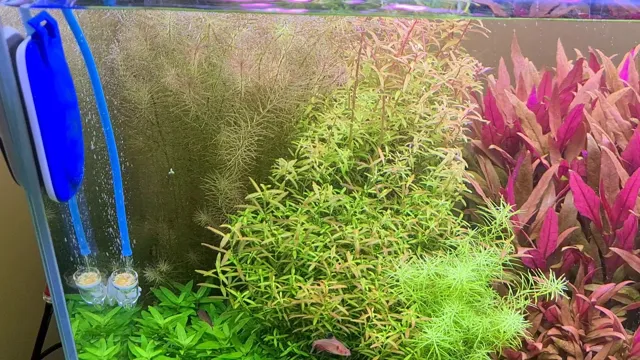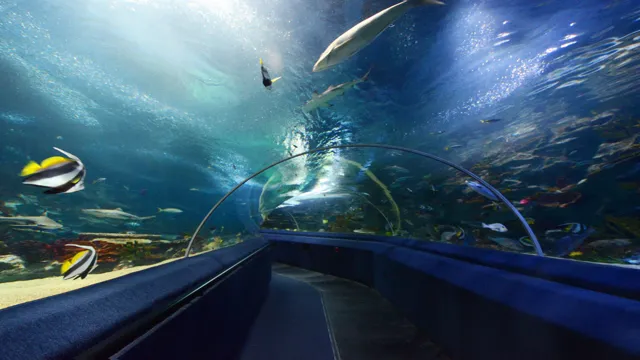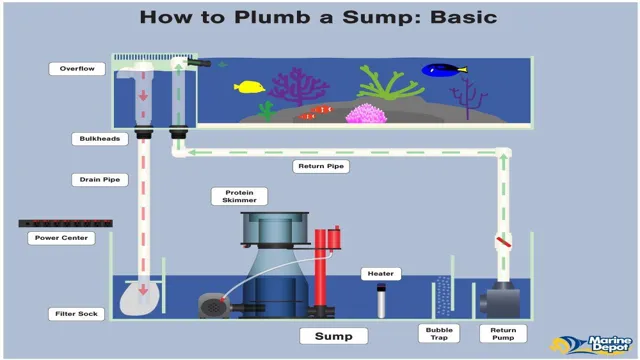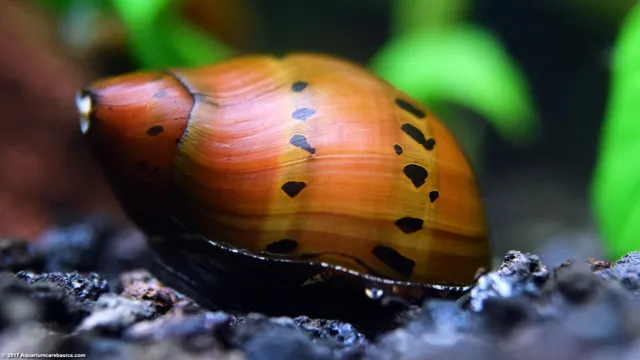How to Dirt a 10-Gallon Aquarium: Step-by-Step Guide for a Thriving Aquatic Environment

Keeping an aquarium clean is essential for the health and well-being of your fish and plants. A 10 gallon aquarium is a popular choice for beginners, as it’s small enough to fit in tight spaces, but still large enough to have a variety of fish. However, maintaining a healthy environment can sometimes feel overwhelming, especially if you’re new to the aquarium world.
In this blog post, we’ll guide you through the step-by-step process of how to clean a 10-gallon aquarium, so you can ensure your aquatic pets are happy and healthy. We’ll cover everything from equipment you’ll need to tips and tricks for making the process as easy as possible. So, grab a cup of coffee, sit back, and let’s dive into this aquarium cleaning journey together!
Prepare Your Supplies
When it comes to preparing your supplies for a 10 gallon aquarium, there are a few things to keep in mind. First and foremost, you’ll need to choose the type of substrate you want to use. There are several options to choose from, including sand, gravel, and even planted substrates.
Once you’ve chosen your substrate, you’ll need to add some decorations and hiding places for your fish. This could include natural-looking rocks and plants, as well as artificial ornamentation. You’ll also need your filtration system, heater, and thermometer to keep your water at the correct temperature and quality.
And last but certainly not least, you’ll need to choose your fish and make sure they’re compatible with each other. With all your supplies gathered and your tank set up, you’ll be ready to start exploring the wonders of your very own underwater ecosystem!
Gloves, Bucket and Sponge
When it comes to washing your car, having the right supplies is a must. One of the most essential items in your car washing arsenal is a pair of gloves. Gloves ensure that your hands are protected from harsh cleaning chemicals, as well as scratches or cuts from debris on your car’s surface.
A bucket is another necessary tool for car washing. This helps you control the amount of water and cleaning solution you use, making for a more efficient and thorough wash. A sponge is also crucial as it provides a gentle yet effective way to scrub your car clean.
When choosing a sponge, make sure to pick one that is soft and won’t scratch your car’s paint. By having these three items in your car washing kit, you can ensure that your car receives a thorough, effective, and safe clean every time.

Drain the Water
If you’re wondering how to clean a 10 gallon aquarium, one of the first steps is to drain the water. This may sound simple enough, but it’s important to do it correctly to avoid making a mess or damaging your fish. Start by unplugging any electrical equipment in the tank, such as filters or heaters, and then use a siphon hose to transfer the water.
Gravel and debris can be removed at the same time by using the siphon hose to vacuum the bottom of the tank. Remember to discard the old water and debris carefully and away from any drains. Once the tank is empty, you can then proceed to the next step in the cleaning process.
By properly draining the water, you’ll be able to start the cleaning process from a clean slate and ensure that your fish stay healthy and happy.
Lower Water Level, Use Sponge For The Remaining Water
If you’re in the process of changing the water in your fish tank, it’s important to drain it properly. Start by lowering the water level to about halfway and removing any decorations or objects that might be in the way. You can then use a sponge to absorb the remaining water.
Simply push the sponge into the corner of the tank and let it soak up the water. Repeat this process until all the water is gone. Why is it crucial to use a sponge instead of just pouring the water out? Well, fish can be easily stressed by sudden changes in water conditions, especially when you remove a large amount of water at one time.
Using a sponge allows you to remove the water gradually and gently without disturbing your fish too much. Plus, it gives you more control over the water level and makes it easier to access hard-to-reach areas in the tank. So, take your time, be patient, and remember that the health of your fish is your top priority.
Remove Decorations and Plants
If you’re wondering how to dirt a 10 gallon aquarium, the first step is to remove any decorations or plants within it. This may seem like common sense, but many people forget this crucial step and end up with a lot of extra work. Removing decorations and plants allows you to easily access all areas of the tank, including the substrate, rocks, and anything else that may have accumulated dirt and debris.
Plus, it gives you the opportunity to deep clean the ornaments and plants themselves, ensuring that they’re free of any harmful bacteria or other contaminants. Once you have everything out of the tank, it’s much easier to vacuum up any visible debris and prepare the tank for a fresh start. Remember, the cleaner your tank is, the happier and healthier your fish will be!
Inspect Thoroughly, Clean Them Separately
When it comes to taking care of your indoor plants, one of the most important things you can do is inspect them thoroughly and clean them separately. This is especially true if you have decorations or other plants nearby. To get started, remove any decorations or other items that may be in the way.
This will allow you to get a better look at the plants and identify any issues that need to be addressed. Once you have removed the decorations, take a close look at each of your plants. Check for signs of pests or diseases, such as yellowing leaves or brown spots.
If you notice anything that looks suspicious, be sure to take action right away. After you have inspected your plants, it is time to clean them. To prevent any cross-contamination, it is best to clean your plants separately.
You can do this by gently wiping down each leaf with a damp cloth or sponge. Be sure to remove any dirt or dust that may have accumulated on the leaves. You can also use a mild soap and water mixture if the plants are particularly dirty.
Taking care of your indoor plants can be a rewarding experience, but it is important to take the time to inspect and clean them regularly. By doing this, you can ensure that your plants stay healthy and happy for years to come. So, the next time you are tending to your indoor garden, be sure to remove any decorations, inspect your plants thoroughly, and clean them separately for optimal results.
Clean The Gravel
Cleaning the gravel in your 10-gallon aquarium is an essential step in maintaining good water quality for your fish. Over time, uneaten food, waste, and other debris can accumulate in the gravel, which can lead to harmful ammonia build-up, cloudiness, and even disease. To clean the gravel, start by unplugging any electrical devices in the tank.
Then, using a siphon or gravel vacuum, carefully vacuum the gravel bed, making sure not to disturb the plants or decorations in the tank. Be thorough, making sure to move the vacuum around to get all the debris. You can also rinse the gravel in a bucket of fresh water to remove any stubborn debris.
Make sure to add water conditioner and beneficial bacteria to the tank after cleaning to help replenish the beneficial microbes in the tank. With regular gravel cleaning, your fish will thrive in a healthy and happy environment.
Scoop Gravel In A Bucket and Rinse Each Gravel Separatedly
Cleaning the gravel in your aquarium is necessary to maintain a healthy and aesthetically pleasing environment for your aquatic pets. To clean the gravel, you should scoop it up in a bucket and rinse each gravel piece separately. This can be time-consuming but ensures that each piece of dirt and debris is removed, leaving your aquarium looking sparkling clean.
Not only does this provide a better habitat for your pets, but it also helps the plants grow healthier. By regularly cleaning your aquarium, you can help keep the overall water quality top-notch. It’s crucial to maintain cleanliness as dirty water can cause bacterial build-up and unwanted algae growth.
Remember that a healthy aquarium means happy pets, and scoop by scoop, your gravel will become clean and bright.
Clean The Glass
If you want to know how to effectively remove dirt from your 10-gallon aquarium, then the first thing you should focus on is cleaning the glass. Oftentimes, the glass in a fish tank can accumulate algae and other debris, which can cause visibility problems and detract from the overall aesthetics of your aquarium. To remove dirt from your tank’s glass, you can use a variety of different cleaning tools, such as magnetic algae scrapers or specialized aquarium cleaning pads.
These products work by attaching to the interior surface of your tank and then using a gentle abrasive action to scrub away dirt and debris. When cleaning your aquarium glass, it’s important to avoid using harsh chemicals or abrasive materials that could damage the delicate glass surface. By regularly cleaning your tank’s glass, you can improve visibility and create a healthier, more beautiful aquatic environment for your fish and other aquatic creatures to thrive in.
Scrape Algae with Razor and Clean with Sponge
Have you ever noticed the build-up of greenish-brown algae on the glass of your fish tank? If so, you know how frustrating it can be to get rid of. The good news is that there is an easy way to scrape off the algae and clean the glass to make it crystal clear. All you need is a razor blade and a sponge.
First, use the razor blade to gently scrape off the algae. Be careful not to scratch the glass, as this can lead to more build-up in the future. After you have removed the algae, use a clean sponge to wipe down the glass.
You can use a specialized glass cleaner or just plain water. The sponge will remove any remaining residue and leave the glass looking as good as new. Not only does having clean glass improve the look of your aquarium, but it is also important for the health of your fish.
Algae build-up can reduce the amount of light that penetrates the water, making it harder for live plants to grow. Additionally, algae can consume valuable nutrients that your fish need to survive. By regularly cleaning the glass, you are promoting a healthy and thriving environment for your aquatic pets.
So, next time you notice algae on your fish tank glass, don’t hesitate to grab a razor blade and sponge to make it sparkle again. Your fish will thank you for it!
Final Step
Now that you’ve cleaned the tank, it’s time for the final step: adding new substrate and water. First, choose a high-quality substrate that is appropriate for your fish and plants. Depending on your setup, you may choose sand or gravel.
Make sure to rinse the substrate thoroughly before adding it to the tank to remove any dust or debris. Next, fill the tank with fresh, dechlorinated water. You can use a water conditioner to remove any harmful chemicals in tap water.
Fill the tank slowly to avoid disrupting the substrate. Once the tank is full, turn on the filter and heater and let them run for at least 24 hours before adding any fish. This will help stabilize the temperature and water chemistry.
Congratulations, you now have a sparkling clean 10 gallon aquarium ready for new inhabitants!
Reassemble the Aquarium and Fill with Water
Congratulations! You’ve made it to the final step of assembling your aquarium. This step is crucial, as it ensures that your fish will have a safe and comfortable environment to live in. To start, place your aquarium in its designated spot and reattach all equipment, such as the heater and filter.
Make sure everything is securely attached and in working order. Next, fill the aquarium with water. It’s important to fill the tank slowly to avoid disturbing the gravel and decorations.
When the tank is about halfway full, add your water treatment chemicals to remove any harmful substances from the water. After you’ve added the necessary chemicals, finish filling the tank to the appropriate level. Finally, turn on your equipment and let the aquarium cycle for several days before adding your fish.
This will ensure that the water is safe and stable for your aquatic pets. Enjoy your new aquarium and your fishy friends! Keywords: aquarium, assembly, water, equipment, fish.
Conclusion
In conclusion, dirted aquariums can be a fantastic way to create a natural and thriving ecosystem in your 10 gallon tank. By using nutrient-rich soil, you can provide a fertile foundation for your aquatic plants to grow and flourish, while also establishing a balanced and healthy environment for your fish. Just remember to prepare your soil properly, incorporate some sand or gravel for stability, and be patient as you wait for your plants to take root.
And, most importantly, don’t forget to give yourself a pat on the back for taking the “dirt-y” route to a beautiful and vibrant aquarium!”
FAQs
How often should I clean my 10 gallon aquarium?
You should clean your 10 gallon aquarium at least once a week to maintain a healthy environment for your fish and other aquatic creatures.
Can I use tap water to fill my 10 gallon aquarium?
Yes, you can use tap water to fill your 10 gallon aquarium, but make sure to treat it with a water conditioner to remove any harmful chemicals or impurities.
How many fish can I keep in a 10 gallon aquarium?
You should keep no more than 5-6 small fish in a 10 gallon aquarium to prevent overcrowding and maintain proper water quality.
What kind of filter should I use for a 10 gallon aquarium?
A hang-on-back (HOB) filter or a sponge filter is a good choice for a 10 gallon aquarium as they provide adequate filtration without taking up too much space.
How often should I change the water in my 10 gallon aquarium?
You should change 20-30% of the water in your 10 gallon aquarium every week to remove excess waste and maintain water quality.
Can I add live plants to my 10 gallon aquarium?
Yes, live plants can help oxygenate the water and provide a natural environment for your fish. Choose plants that are suitable for the size and lighting conditions of your aquarium.
How do I prevent algae growth in my 10 gallon aquarium?
Algae growth can be prevented by reducing the amount of light your aquarium receives, maintaining proper filtration, and avoiding overfeeding your fish. You can also add algae-eating snails or fish to help keep it under control.






